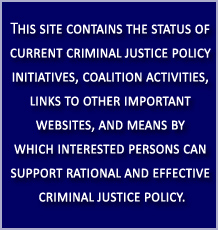
| Join our E-Mail Action Network |

Re-Entry Roundtable
MHSA Corrections Committee Re-entry Roundtable
Wednesday, December 3, 2003
The Paulist Center, Boston
On December 3, 2003, the Massachusetts Housing and Shelter Alliance convened a group of more than 45 people currently working with ex-offenders in Massachusetts to discuss barriers that those coming out of prison face during the re-entry process and to develop ideas for making their re-entry more successful.
Participants of the “Re-entry Roundtable” event came from both public and private agencies including the Massachusetts Department of Correction; county houses of correction; community-based programs for ex-offenders and homeless people; halfway houses; substance abuse and mental health service providers; and faith-based programs for ex-offenders.
Participants spent the morning working in smaller groups, discussing some of the problems they routinely faced. Listed below are suggestions common among the groups for improving the re-entry process.
Improve the Continuum
There should be a focus on holistic and wrap-around services that start at the beginning of an inmate’s time in prison and continue well past his or her release. Funding should follow ex-offenders across the system, ensuring that there is access to substance abuse treatment, housing assistance, and employment services both before and after release. The correctional system needs to embrace a mission that extends much further than care and custody, and that recognizes that everything from incarceration to the completion of discharge planning is about preparing the inmate for community re-entry. Health care needs to be made available to those coming out of prison. To the extent that the success of re-entry efforts may depend upon an ex-offender’s enrollment in MassHealth, enrollment should become a routine part of discharge preparation. More housing and housing subsidies need to be made available to ex-offenders. While many of the services an ex-offender needs when re-entering society are available, those services need to be better coordinated. Inmates that have special barriers to employment related to the category of their offense need treatment programs that are prepared to address those barriers. In the absence of specialized transitional programs there is no incentive for transitional housing programs to accept the more difficult inmates. Increase Collaboration
Collaboration between correctional facilities and community providers should take place, making it easier for outside community programs to come into prisons before release. Allowing inmates to make connections with workers from community-based programs before their release helps them establish trust with someone on “the outside” and provides a sense of hope. The prohibition on contact between prison-based staff and ex-offenders who have been released into a community program should be re-examined with an understanding of the value and impact on successful personal change that a consistent, trust-based, and caring relationship can have. Public funds should go toward the development of a centralized, Web-based resource guide for correction officers working with inmates and re-entering ex-offenders. Such a guide could include community program descriptions, listings of health and human services resources and how to access those services, and other information that would be helpful for re-entering ex-offenders. Pre-release centers with wrap-around services should be established. The centers would offer comprehensive services, including:
Counseling and mental health services. Substance abuse treatment services. Help in addressing and shifting from “criminal thinking.” Anger management counseling. Life skills development. Assistance with enrollment in MassHealth. Assistance with enrollment in mainstream benefits programs. Assistance with transportation from transitional housing to treatment programming, employment, etc. Increase Public Awareness
A media strategy should be developed to educate the public on the realities of the ex-prisoner population, combating fear and stereotypes and putting a human face on ex-offenders. Public funding should be made available for such a project. Policy
Policy should dictate increased collaboration between agencies working with the corrections population (DMH, DMA, DTA, etc.). The prison model should shift from one of punishment to one of rehabilitation. Endorse “Housing-First” model. Find ways to lessen caseloads for correctional officers. Ideal caseload for re-entry workers would be around 50 inmates per year. Reconsider mandatory drug sentences. There would be real opportunities to reclassify inmates every 6 months (DOC) or 3 months (County), and there would be opportunities to step down security, so that inmates in high security with limited privileges would have an opportunity to realistically prepare for release. Develop resources (informational materials, seminars, etc.) on how inmates, re-entry case managers, service providers, and employers can effectively deal with CORI issues. Allow CORI rehabilitation, which would give ex-offenders the opportunity to gain a waiver that would allow them to take advantage of housing programs and could greatly increase their employment opportunities. Institute mandatory supervision. Convene more gatherings of varied stakeholders like the Re-entry Roundtable.
15 Barbara Street | Jamaica Plain, MA 02130 | Tel: 617-390-5397 | [email protected]